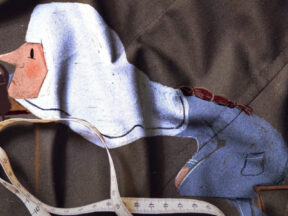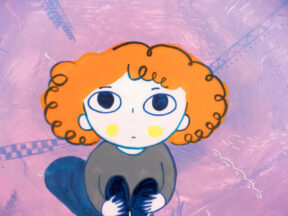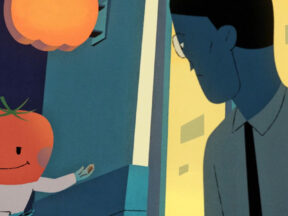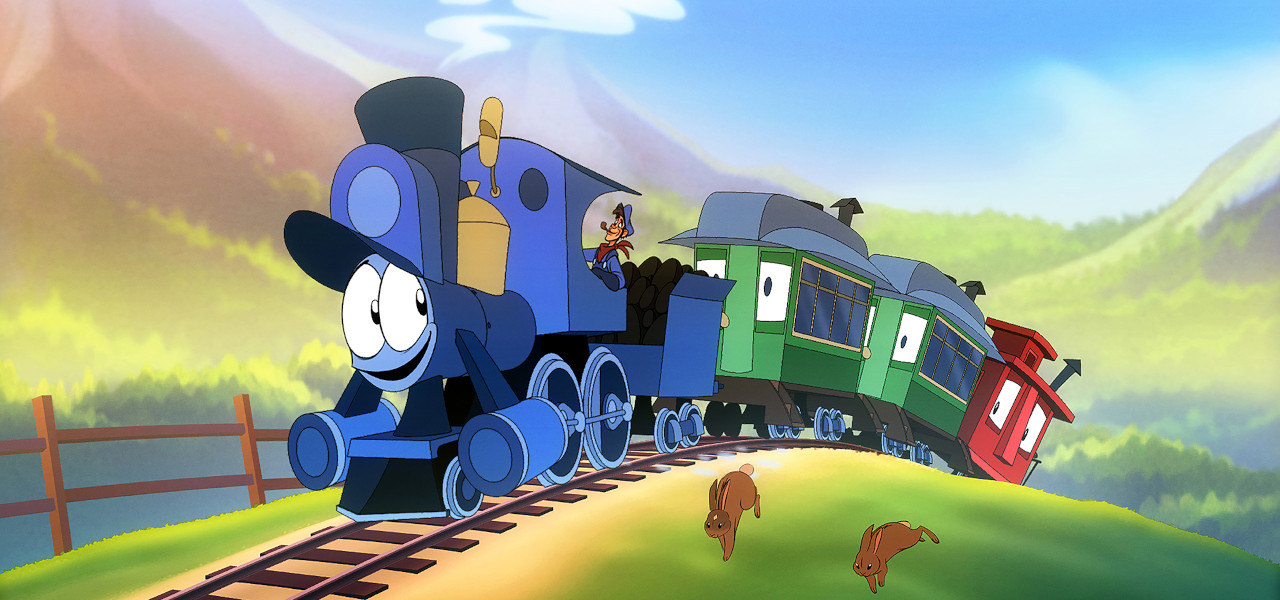
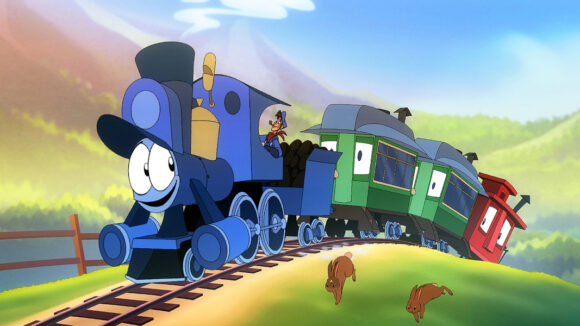
2024 Oscars Short Film Contenders: ‘The Brave Locomotive’ Director Andrew Chesworth
Welcome to Cartoon Brew’s series of spotlights focusing on the animated shorts that have qualified for the 2024 Oscars. There are several ways a film can earn eligibility. With these profiles, we’ll be focusing on films that have done so by winning an Oscar-qualifying award at an Oscar-qualifying festival.
Today’s short is The Brave Locomotive from former Disney and Netflix animator Andrew Chesworth (Frozen, Moana, Klaus), who was nominated – alongside Bobby Pontillas – for the best animated short Oscar in 2019 with their film One Small Step. The Brave Locomotive earned its qualification by winning the best animation award at the LA Shorts International Film Festival.
Described by Chesworth as “a love letter to the Andrews Sisters and 1940s animation,” The Brave Locomotive is an Old West tale about a fearless little train that comes face-to-face, literally, with a future that may not have room for it. Chesworth began developing the idea in 2008 and recorded the film’s original music with Tom Hambleton in 2009, before shelving the project for several years while he progressed his studio animation career. When the pandemic forced Chesworth to spend more time at home, he got back to work on The Brave Locomotive.
Cartoon Brew: This film is a real throwback, from its animation to its music to its willingness to go dark with the narrative. What are some of the classic works that inspired you while developing this film?
Andrew Chesworth: Melody Time and Make Mine Music are among my earliest memories of experiencing animation. The inventive marriage of images and music arrested me. The Andrews Sisters sounded like magic! It has long been on my bucket list to create a love letter to that specific era that sparked my passion for animation.
Other inspirations include Pinocchio, Dumbo, The Adventures of Ichabod and Mr. Toad, Susie the Little Blue Coupe, and Paul Bunyan. I enjoy films from Disney’s lifetime that explore a full range of emotions and successfully balance sincerity with satire.
I remember being enchanted and terrified watching The Brave Little Toaster and Who Framed Roger Rabbit as a small child in the 1980s. Those films made impressions with their incredibly dynamic directing. I loved animation that felt like that. Growing up, I also felt a kinship with Bill Peet and Bill Watterson. Their work is reflective, entertaining, and rewarding to revisit.
What was it about this story or concept that connected with you and compelled you to direct the film?
I originally developed the project in late 2008, in my early 20s. The theme of obsolescence was always at the heart of it. Back then, it felt like it was commenting on the sudden decline of hand-drawn American feature animation. When I revived the project during the pandemic (with a “you only live once” mindset following nearly a decade pause), some people felt it was commenting on the sudden arrival of A.I.
Trains lent themselves well to the era being pastiched and provided exciting possibilities for animation and music. Westerns like True Grit, The Ballad of Buster Scruggs (a live-action R-rated Melody Time), and even No Country For Old Men explore obsolescence in ways I found entertaining to echo in this family film.
I appreciate the oldest of the old and the newest of the new in both animation and life. There is beauty in things once mainstream becoming boutique.
What did you learn through the experience of making this film, either production-wise, filmmaking-wise, creatively, or about the subject matter?
A project is only as good as the team making it. When I pitched the concept to my former animation instructor, Tom Schroeder, he connected me with composer Tom Hambleton. Hambleton absolutely slayed the assignment from the casting to the arrangements to the Foley to the period microphone everything was recorded on. For me, the approach to the collaboration was the reason to wake up and make the short.
Creating a film with that music room mindset from animation’s Golden Age, as composers Frank Churchill and Leigh Harline did with Walt Disney’s artists, was a process I always wanted to experience. Tom went to that place with me. We developed the music and reels simultaneously. That’s been my favorite way to work as a filmmaker in animation. It yields a result unlike any other.
Also, Patreon suited me for this project’s revival because it matched my preferred pace and temperament.
Can you describe how you developed your visual approach to the film? Why did you settle on this style/technique?
I wanted the film to resemble a fully restored animated short from the 1940s but use pragmatic digital techniques to justify extremely limited resources besides my own time.
Instead of paper and cels, I had Photoshop and TVPaint. Instead of a multiplane camera, I had After Effects. The trains were animated in Maya on 2s and 1s and rendered to look like drawings. The final look is the result of compromise between period authenticity and tools that made the film achievable by a small, remote team.
I was fortunate to have incredible artists like Allie Strom and Amy Lewis leading the background team with beautiful digital paintings. I was similarly lucky to have the talented Kazimir Iskander create a full color script for the film. Kaz’s style I’ve affectionately described as “sarcastic Mary Blair.” I was fortunate to work on Klaus and connect with some of the world’s greatest young animators.

.png)
